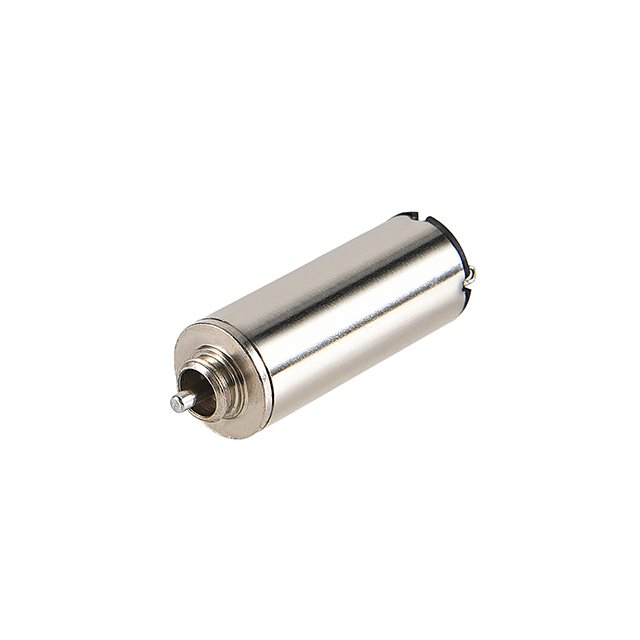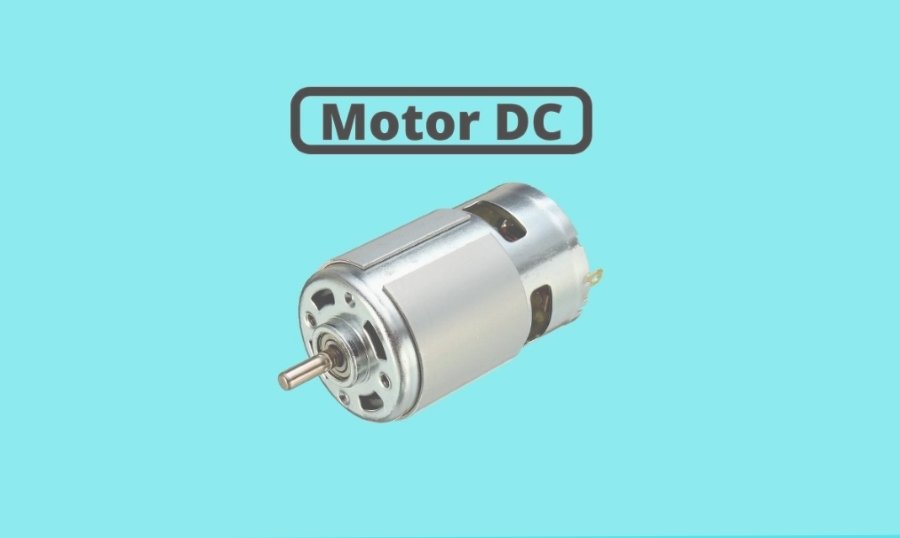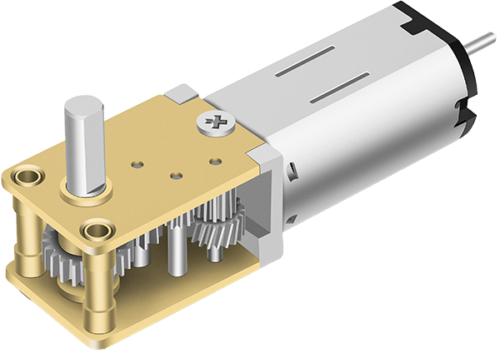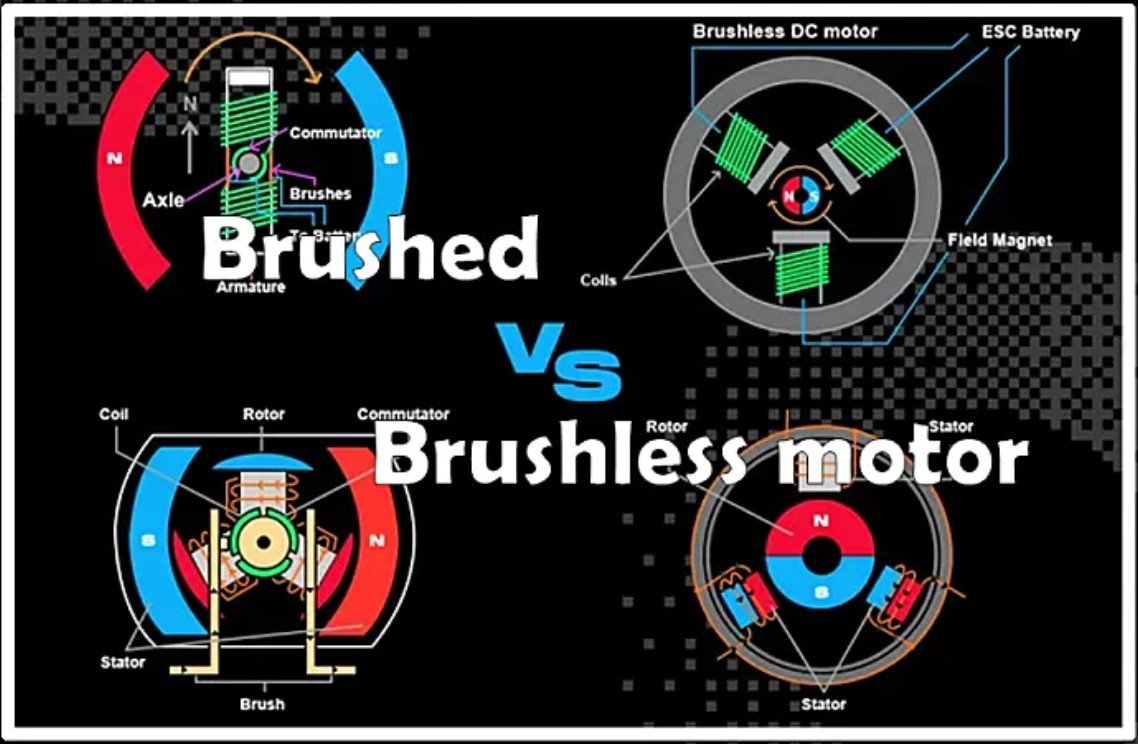Gearmotors enhance how industries work by making them more efficient and faster. They provide numerous benefits for industrial applications.
Improved designs can cut design time by up to 75%.
Utilizing PMAC motors can save up to 30% in energy consumption.
Smooth bearings help reduce repair costs and extend the lifespan of motors.
These advantages make gearmotors essential for industrial applications seeking to operate smarter and more reliably.
Key Takeaways
Gearmotors help factories save energy and cut costs. They are important for modern machines.
Picking the right gearmotor means knowing gear types, torque needs, and gear ratios for each job.
Checking oil and cleaning often keeps gearmotors working longer and avoids expensive repairs.
INEED gearmotors have smart designs that work better. They are used in industries like car making and food production.
Using energy-saving methods can lower costs and help the environment.
Understanding Gearmotors in Industrial Applications
Definition and Components of Gearmotors
A gearmotor is a device that combines a motor and gearbox. This design helps create more power and slower speeds. It is useful for many industrial tasks. The motor produces energy, and the gearbox changes speed and power to fit the job.
Main parts of a gearmotor include:
Motor: Turns electricity into movement.
Gearbox: Changes speed and power for specific needs.
Output Shaft: Moves energy to the machine it powers.
Bearings: Help parts move smoothly by reducing friction.
Knowing these parts helps you understand how gearmotors work. Important features like speed, power, and efficiency show how well they perform. For example, a gearmotor might run at 58 rpm without load, have 2.5 Nm torque, and 43% efficiency. These numbers mean it can handle tough jobs while staying reliable.
Types of Gearmotors: Planetary, Spur, Worm, and Brushless
There are different types of gearmotors, each made for certain tasks. Here are the main ones:
Planetary Gear Motors: Small but strong, great for robots and medical tools.

Spur Gear Motors: Simple and cheap, good for light jobs like small gadgets.
Worm Gear Motors: Can lock themselves, perfect for heavy machines like cranes.

Brushless Gear Motors: Long-lasting and efficient, ideal for factories.

Each type has special benefits. Planetary motors are precise, while worm motors are stable under heavy loads. Brushless motors last long and are quiet, making them great for tough industrial jobs.
Common Applications Across Industries
Gearmotors are important in many industries. They provide the right power and speed for modern machines. Here are some examples:
Industry Sector | Application Examples | Key Trends Driving Demand |
|---|---|---|
Automotive | Assembly lines, vehicle parts | Growth of electric and self-driving cars |
Industrial | Machines for metalwork, textiles | Rise of smart factories and automation |
Aerospace | Flight systems, landing gear, satellite controls | Need for light, high-performing parts |
Construction | Cranes, elevators, heavy equipment | Increase in global building projects |
Food Processing | Mixers, conveyors, packaging machines | Focus on cleanliness and efficiency |
For instance, in construction, gearmotors power cranes to lift heavy items. In food processing, they keep mixers and conveyors running smoothly and cleanly.
Studies show how useful gearmotors are. Cycloidal gearmotors give strong, quiet performance, great for low-noise places. Helical bevel gearmotors are precise and efficient, perfect for robots and automation. These features make gearmotors key to improving industries and driving innovation.
Enhancing Industrial Efficiency with INEED Gearmotors
Energy Efficiency and Cost Savings
Saving energy helps lower costs in factories and industries. INEED gearmotors are built to use less energy but still work well. They use advanced technology to save power and money. For example, INEED gearmotors can cut energy use by 30% compared to regular ones. This means lower electricity bills and less harm to the environment.
Here’s a table comparing regular gearmotors to INEED’s efficient models:
Feature | Regular Gearmotor | INEED Gearmotor |
|---|---|---|
Energy Use Reduction | None | Up to 30% |
Efficiency Boost | None | 50% better than IE2 motors |
Cost to Operate | Higher | Lower |
Gearbox Efficiency | Low | High |
These benefits make INEED gearmotors a smart choice for saving money and energy. Using these motors helps businesses work better and stay competitive.
Reliable Operation with INEED Small Gear Motors
Gearmotors need to work well in tough jobs. INEED small gear motors are made to handle hard tasks without stopping. They are great for slow speeds and strong power, which is perfect for precise jobs.
Here’s some data about INEED small gear motors:
Factor | Details |
|---|---|
Slow Speed Range | |
Strong Torque Range | Over 100 oz-in |
Gear Ratio Example | 80:1 (close to 75.1:1) |
Final Speed Example | 42.6 RPM |
These motors also work in harsh places. For example:
In hot areas, cooling systems keep them running smoothly.
In wet places, rust-proof materials stop damage.
You can also customize these motors to fit your needs. You can change their size, parts, or settings. This makes them useful for many things, like robots or medical tools.
Optimized Torque and Speed for Productivity
Getting the right mix of speed and power is important. INEED gearmotors are made to give the best performance. They help machines work faster and better. For example, INEED planetary gear motors are small but strong, great for tight spaces.
Their design allows for exact control of speed and power. This helps machines like conveyor belts and robotic arms work smoothly. Faster production and less downtime are the results.
Using INEED gearmotors improves how factories run. They handle hard jobs easily, making them a great tool for businesses wanting to save money and boost productivity.
Performance Factors of Gearmotors in Industrial Settings
Accurate Control with INEED Planetary Gear Motors

Many industrial jobs need precise control. INEED planetary gear motors are great for this. They have a special design where gears share the work evenly. This makes their movements smooth and accurate, even in tough conditions. They are perfect for tasks like moving robotic arms or medical tools that need exact positioning.
These motors are small, so they fit in tight spaces. Even though they are small, they are strong and steady. For example, in robots, they help with exact movements, making work faster and more accurate. They are also quiet, which is helpful in places where noise is a problem.
Toughness in Hard Conditions
Gearmotors often work in rough environments. INEED gearmotors are made to last in these tough places. They go through many tests to prove their strength. Here are some examples:
Test Type | Why It’s Done |
|---|---|
Checks if it can handle machine shaking. | |
Temperature test | Makes sure it works in hot and cold places. |
Drop test | Tests if it survives being dropped or hit. |
Long-use test | Sees how well it works over time. |
Moisture test | Checks if it works in wet or humid areas. |
Water test | Makes sure it doesn’t leak or break in water. |
These tests show the motors can handle heat, water, and dirt. They have strong protection to keep dust and moisture out. This helps them work well in hard conditions.
Flexible Use for Many Jobs
Different industries need different motors. INEED gearmotors can be used for many jobs. Small motors are good for tiny tools like medical devices. Bigger motors are strong enough for heavy machines in factories or construction.
You can also change the motor to fit your needs. You can adjust its size, speed, or power. This makes INEED gearmotors useful in many fields, like healthcare or space technology. Their flexibility helps improve work in many industries.
Effective Implementation of Gearmotors
Picking the Right Gearmotor: INEED Options
Choosing the right gearmotor helps machines work better. You need to check a few things to find the best fit. For example, gear types like spur or helical change how much weight they can handle. Gear ratios decide how motor speed turns into the needed rpm. Torque shows the strength needed to move heavy items. Overhung loads, which push sideways on the shaft, also matter when picking a motor.
Factor | What It Means |
|---|---|
Gear Types | Spur and helical gears affect strength and efficiency. |
Gear Ratios | These change motor speed into the right rpm for machines. |
Torque Requirements | Shows how much force is needed for heavy tasks. |
Overhung Loads | Sideways forces on the shaft that can bend it, affecting choice. |
INEED has options to match these needs. If you need precision, planetary gear motors are great. For locking features, worm gear motors are reliable. INEED customizes motors to fit your job.
Best Installation Practices for Top Performance
Installing gearmotors the right way makes them work well. Pre-tested gearmotors save time and lower risks since they are already checked. Look at performance charts to match your needs. These charts show speed, torque, and efficiency details.
Here are some easy installation tips:
Match the gearmotor to the job and environment.
Pick the right gear reduction and oil.
Align the motor with your machine’s setup.
Check motor controls before starting it.
Doing these steps prevents problems and makes the motor last longer.
Tip: Always follow the maker’s instructions for setup.
Maintenance Tips to Make Motors Last
Taking care of your gearmotor keeps it working well. Check oil levels and replace them when needed. Look for damage on gears and bearings. Clean the motor to stop dust from causing problems. Watch for unusual vibrations to catch issues early.
Plan regular performance checks too. These tests make sure the motor still meets speed and power needs. Keeping up with maintenance reduces breakdowns and helps the motor last longer.
Reminder: A cared-for gearmotor saves money and boosts productivity.
Energy Management Practices for Sustainability
Taking care of energy use helps the planet and saves money. Using gearmotors with smart energy habits can cut waste and boost efficiency. Simple changes can make motors last longer and cost less to run.
A good idea is to make a Motor Management Plan. This plan tracks how motors work, plans repairs, and decides when to replace old ones. It keeps motors running well and avoids long stops. Another helpful step is having a Motor Failure Policy. This policy explains what to do if a motor breaks, so you don’t make costly mistakes.
Switching to Premium Efficiency Motors is also smart. These motors, like NEMA Premium models, use less energy over time. Replacing old motors with these saves a lot of energy. Fixing frequent motor problems is important too. Finding and solving the main issues stops the same problems from happening again.
Here’s a quick look at these ideas:
Practice | Key Benefits |
|---|---|
Motor Management Plan | Saves energy and avoids long stops. |
Motor Failure Policy | Prevents bad choices during motor breakdowns. |
Premium Efficiency Motors | Uses less energy and lowers costs. |
Addressing Failures | Makes motors more reliable and fixes problems. |
You can also save energy by checking motor loads. Running motors at the right load level stops waste and helps them last longer. Cleaning and oiling motors regularly also improve how they work. These small actions can make a big difference.
Tip: Start with one or two ideas and add more later. Saving energy helps your business and the environment. 🌱
Gearmotors help industries work better and faster. They save energy, improve work output, and keep machines running smoothly. INEED gearmotors are special because they use advanced designs, precise engineering, and can be customized for your needs.
Feature | Information |
|---|---|
Market Growth | Big growth due to demand for small, smart, and efficient gear systems. |
Key Industries | Used in cars, robots, planes, and factory machines. |
New Technology | Better controls, improved building methods, and lighter materials. |
Energy Efficiency | Focus on cutting energy waste and working more efficiently. |
Challenges | High costs to make and need for constant research to stay ahead. |
Using INEED gearmotors helps you stay competitive. They are dependable and save energy, making them a great choice for success.
Tip: Switch to INEED gearmotors to save money and work better. 🌟
FAQ
What does a gearmotor do?
A gearmotor combines a motor and gears to control speed and add strength. It powers machines like conveyor belts, robots, and medical tools that need precise movement or extra force.
How can you pick the right gearmotor?
Think about what your machine needs. Check the torque, speed, and load it requires. Match these needs with the gearmotor’s features. Planetary gear motors are good for accuracy. Worm gear motors are better for heavy-duty jobs.
Can gearmotors handle tough conditions?
Yes, many gearmotors, like INEED ones, are made for harsh places. They are tested for vibration, temperature, and moisture. This makes them work well in hot, cold, or wet areas.
How often should you care for a gearmotor?
Take care of gearmotors regularly. Check oil, clean the motor, and look at gears and bearings every few months. Fixing problems early stops breakdowns and helps the motor last longer.
Can INEED gearmotors be customized?
Yes! INEED lets you change gearmotors to fit your needs. You can adjust size, gear ratios, and torque. This makes them perfect for robots, medical tools, or factory machines.







